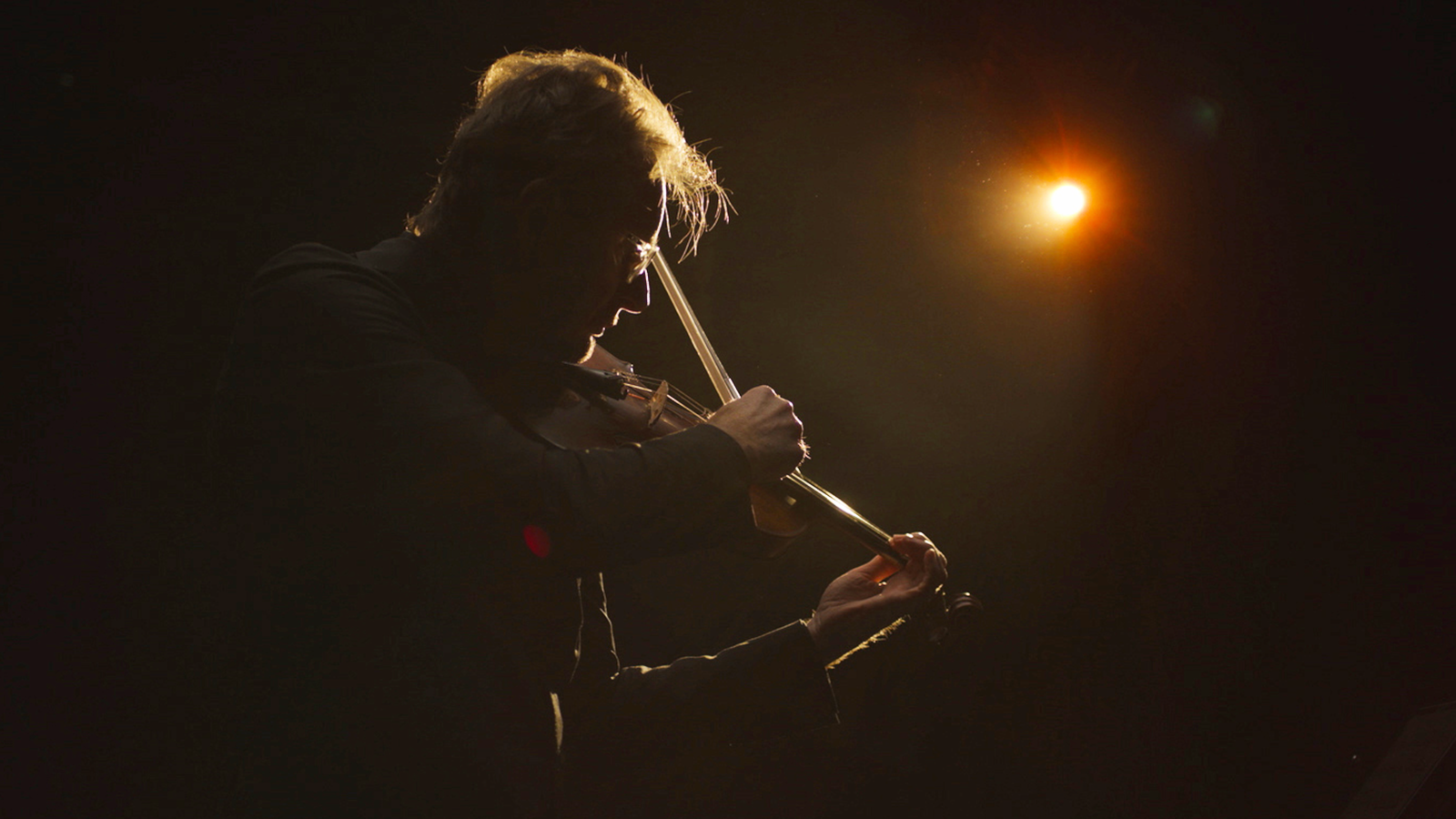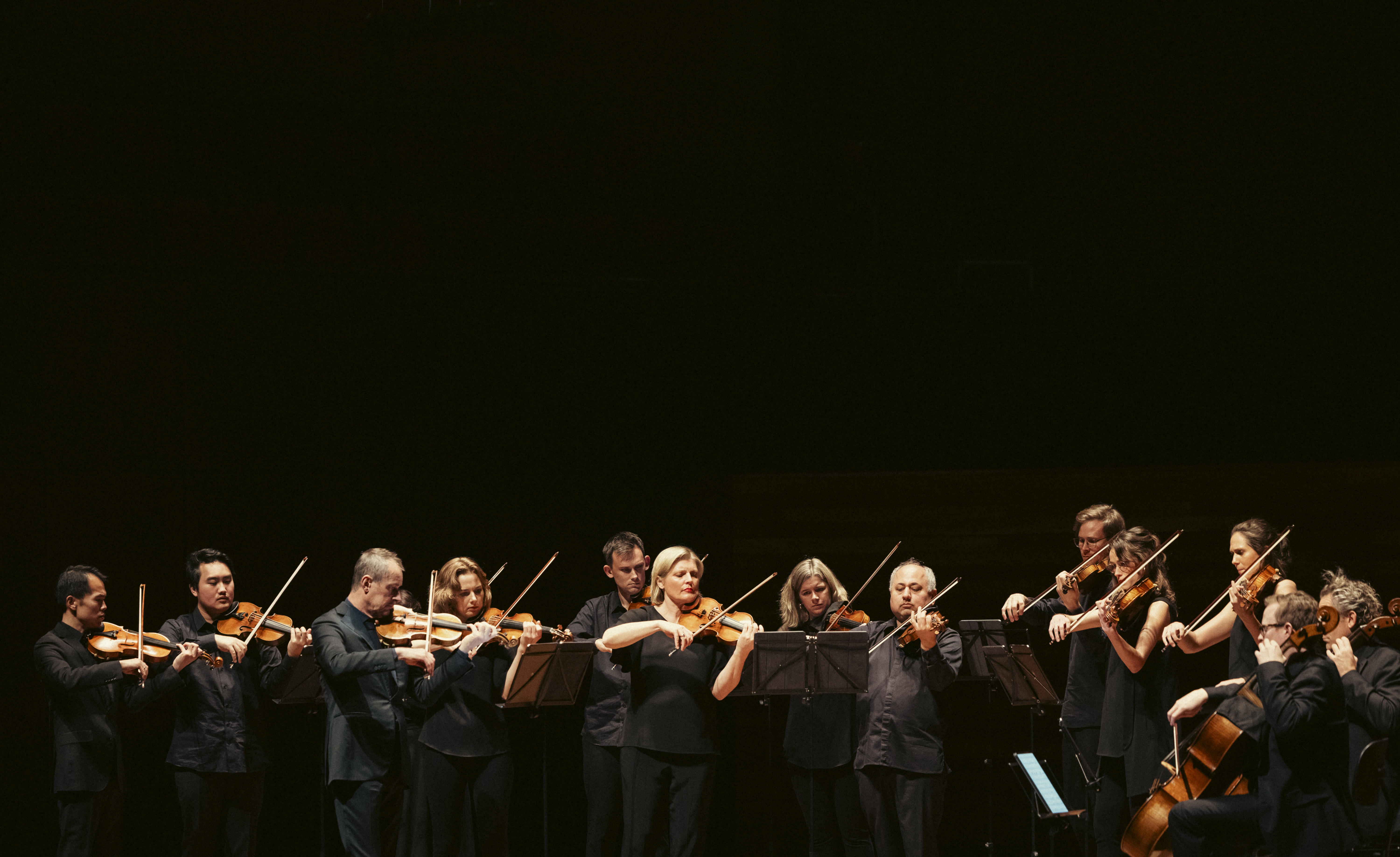
By Rosie Pentreath
The soul-searching, spiritual music of Arvo Pärt and JS Bach has a rare transcendent quality, and when the composers’ works are heard entwined with each other in one program, they are truly transporting.
Arvo Pärt may be composing over 250 years since Bach died, but the two composers’ devotion to religion, and resultant music of worship, contemplation, and representation of the very highs and lows of human emotion, unite them.
In August 2024, Richard Tognetti and the Australian Chamber Orchestra join forces with Sydney Dance Company, and its Artistic Director and choreographer Rafael Bonachela, to perform Silence & Rapture, an immersive showcase of some of these two composers’ finest works.
Here are some of our selections of the most incredible music we will experience.
Read more: The rock, pop and indie stars influenced by Arvo Pärt
1. Arvo Pärt: Vater unser
Vater unser is a sacred vocal work, based on The Lord’s Prayer in German.
Written originally for a boy soprano or countertenor with piano accompaniment in 2005, and performed at the 60th Anniversary of Pop Benedict XVI’s ordination to the priesthood, this work also has a strong connection with the Australian Chamber Orchestra.
In 2013, Pärt created a new arrangement of the piece with a choice of string quintet or string orchestra accompaniment, and the world premiere was performed by a string quintet from the ACO, with countertenor Andreas Scholl as soloist, in Wollongong in 2013.
2. JS Bach: St Matthew Passion (Erbarme dich, mein Gott)
This mournful aria from Bach’s oratorio, St Matthew Passion has one of the most heart-wrenching and memorably beautiful melodies in Baroque music.
“Have mercy, my God, for the sake of my tears!” the countertenor soloist sings. “Look here, heart and eyes weep bitterly before you.”
The song comes at the point in the oratorio – a large-scale orchestral and choral setting of the gospels – where the apostle Peter publicly denies association with Jesus Christ, and weeps as a result of his own actions.
3. Arvo Pärt: Fratres
One of Pärt’s best known works, Fratres (Latin for “Brothers”) was composed in 1977 and belongs to the composer’s group of works that firmly established the principles of his ‘tintinnabuli’ method of writing music.
‘Tintinnabuli’ roughly translates as ‘a bell’ and evokes if not a technique, an essence and style of composing in a still, resonant and very beautiful way that ultimately produces existential and deeply spiritual music. Pärt’s Für Alina and Tabula rasa are written with the same essence.
Fratres can be performed with any combination of instruments, but in the version for solo violin and orchestra, the soloist is challenged to perform passages requiring the utmost dexterity and intention – from the swirling, rhythmic arpeggio patterns of the opening, to some moments that call for more forceful strokes with the bow – while the undercurrent of the orchestra is mournful and steadfast, articulated regularly by the puncturing, rhythmic 'clack' of the claves.
Absolutely stunning.
4. JS Bach: Cello Suite No.3 (I. Prelude)
The Prelude from the third of JS Bach’s popular unaccompanied Cello Suites features in Silence & Rapture.
The opening of Cello Suite No.3 in C Major is cheerful and uplifting, featuring mesmerising patterns of notes that pour joyfully out of the performer’s fingers and bow strokes.
Bach likely composed his six Cello Suites between 1717 and 1723, when he was working in Köthen in Germany. It was customary to write instrumental suites like this with a prelude, which we have here, followed by different types of Baroque dance.
The great cellist Pablo Casals is given the credit for popularising Bach’s Cello Suites: after discovering an old edition in a thrift shop in Barcelona in 1889 when he was 13, the story goes, the cellist regularly performed them. This was up until he was 60, at which point he immortalised them in the recordings of the works he made at the iconic Abbey Road Studios in London.
5. Arvo Pärt: Für Lennart in memoriam
Für Lennart in memoriam is an impossibly beautiful memorial piece composed for the late former President of Estonia, Lennart Meri.
Pärt and Meri were friends. They had worked together at Estonian Radio in their youth, and their paths continued to cross throughout their lives.
Kindred spirits perhaps. The composer says: “I believe now we would be much more similar than at a younger age.”
The music, written for string orchestra, is lyrical and mournful, and incredibly impactful. It’s strikingly intentional music, which invites you to truly immerse yourself in sound. Extraordinary.
6. JS Bach: Magnificat in D Major (II. Et exultavit spiritus meus in Deo salutari meo)
Bach composed his monumental Magnificat, BWV 243, in 1723, and it was his first major composition based on Latin text.
It’s a twelve-movement work that traditionally marks high holidays in the Christian calendar, including Easter and Christmas. The second movement, ‘Et exultavit spiritus meus in Deo salutari meo’, features in Silence & Rapture, bringing an uplifting, exultant mood to that moment in the performance.
“And my spirit has rejoiced in God my savior,” the song recites.
7. Arvo Pärt: My Heart’s in the Highlands
This evocative short song was written as a birthday present.
The countertenor David James – a member of the British vocal quartet The Hilliard Ensemble – was turning 50, and Pärt’s setting of choice was a poem by Scottish poet Robert Burns.
“My heart's in the Highlands, my heart is not here,” the poem intones. “My heart's in the Highlands, a-chasing the deer; Chasing the wild-deer, and following the roe, My heart's in the Highlands, wherever I go.”
The song slowly swells, and expands, going up in pitch and volume until it feels like a desperate rallying cry to the highlands the protagonist misses so much.
Silence & Rapture tours to Sydney, Melbourne, Adelaide, Perth, Canberra and Brisbane. Click here to buy tickets – from $59, or $35 for under 35s and $25 for students.
